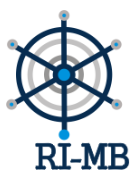
Use este identificador para citar ou linkar para este item:
https://www.repositorio.mar.mil.br/handle/ripcmb/845686Registro completo de metadados
| Campo DC | Valor | Idioma |
|---|---|---|
| dc.contributor.advisor | Dr Michele Curioni | pt_BR |
| dc.contributor.author | Farias, João | - |
| dc.date.accessioned | 2023-01-09T16:16:40Z | - |
| dc.date.available | 2023-01-09T16:16:40Z | - |
| dc.date.issued | 2022 | - |
| dc.identifier.uri | https://www.repositorio.mar.mil.br/handle/ripcmb/845686 | - |
| dc.description | The use of machine learning was explored in the context of electrochemical impedance spectroscopy (EIS), with the purpose of overcoming some of its inherent complexities and increasing the efficiency in its use for coating performance evaluation . For this project, EIS and visual inspection data from marine coatings exposed to accelerated corrosion tests for approximately 2.5 years were applied to machine learning techniques to acquire a prototyped classification-type algorithm. Also, electrochemical tests–including EIS and alternative methods–were applied to coated samples immersed in 5 wt.% NaClto generate datafor the training, testing and validation of fitting-type machine learning algorithms, “prepared as a proof of concept”. An experimental setup using automatablecomponentswas adopted, which surpassed the necessity of preparing and performing each electrochemical test one-by-one.Overall, the results have shown that machine learning approaches have the potential to overcome several complexities related to EIS, and this combination of knowledges should be further exploited. | pt_BR |
| dc.description.abstract | The use of machine learning was explored in the context of electrochemical impedance spectroscopy (EIS), with the purpose of overcoming some of its inherent complexities and increasing the efficiency in its use for coating performance evaluation . For this project, EIS and visual inspection data from marine coatings exposed to accelerated corrosion tests for approximately 2.5 years were applied to machine learning techniques to acquire a prototyped classification-type algorithm. Also, electrochemical tests–including EIS and alternative methods–were applied to coated samples immersed in 5 wt.% NaClto generate datafor the training, testing and validation of fitting-type machine learning algorithms, “prepared as a proof of concept”. An experimental setup using automatablecomponentswas adopted, which surpassed the necessity of preparing and performing each electrochemical test one-by-one.Overall, the results have shown that machine learning approaches have the potential to overcome several complexities related to EIS, and this combination of knowledges should be further exploited. | pt_BR |
| dc.language.iso | en | pt_BR |
| dc.publisher | University of Manchester | pt_BR |
| dc.rights | openAccess | pt_BR |
| dc.subject | Corrosao | pt_BR |
| dc.subject | Espectroscopia de impedancia eletroquimica | pt_BR |
| dc.subject | aprendizado de maquinas | pt_BR |
| dc.title | Exploring the use of machine learning for improving the efficiency of coating performance evaluation. | pt_BR |
| dc.type | masterThesis | pt_BR |
| dc.subject.dgpm | Engenharia Naval | pt_BR |
| Aparece nas coleções: | Engenharia Naval: Coleção de Dissertações | |
Arquivos associados a este item:
| Arquivo | Descrição | Tamanho | Formato | |
|---|---|---|---|---|
| EXPLORING THE USE OF MACHINE LEARNING FOR IMPROVING THE EFFICIENCY OF COATING PERFORMANCE EVALUATION.pdf | 6,08 MB | Adobe PDF |  Visualizar/Abrir |
Os itens no repositório estão protegidos por copyright, com todos os direitos reservados, salvo quando é indicado o contrário.